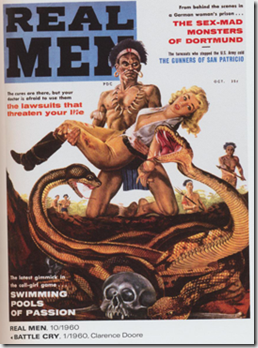
In the Critique of Pure Reason, Immanuel Kant argues that moral actions are the actions of an autonomous will, and that an autonomous will is a will that is determined by reason alone. Moral actions, additionally, follow the form of being universalizable, hence Kant finds in rationality a confirmation of the Golden Rule: when you do unto others as you would have them do unto you, you are behaving in a manner that can be universalized for all mankind.
In the years following Kant’s death, the notion that all rational people, when they are being rational, will consistently agree with certain propositions has fallen somewhat into disfavor. This has reached the point that Habermas, perhaps one of the last post-modern defenders of some form of Kantian morality, argues that while it was presumptuous for Kant to make claims about what rationality looks like, we should still work towards some sort of ideal speech community which removes all biases and personal ambitions from the process of communication; this would de facto be the closest thing we can get to our ideal of pure reason, at which point we let them tell us what all rational people ought to believe.
And so you will not often see the phrase ‘all rational people agree’ in print much, these days, though back-in-the-day it was a commonplace. Still, old habits die hard, and in its place we often find the phrase ‘most people agree’ in its place, with the implication that the “most people” we are talking about are the “rational people.”
I was recently trying to find a good article on Dependency Injection for a colleague and came across this one on MSDN, which unfortunately begins:
“Few would disagree that striving for a loosely coupled design is a bad thing.”
I assume that the author originally intended to say “Most would agree that striving for a loosely coupled design is a good thing.” He then attempted to negate the statement for emphasis, but managed to over-negate, and failed to see that “few would disagree” is the apposite of “many would agree”, rather than its opposite.
In fact someone mentioned this to the author on his personal blog, but the author averred that this was just a Canadianism and not actually a mistake.
Be that as it may, it recalls a problem with logical quantifiers and natural language. In the classic square of opposition (which sounds like a perverse political system but is simply a diagram that explains the complex relationship between universal propositions and existential ones) we are reminded that while universal affirmative propositions are contrary to universal negations, they are not contradictory.
If an A proposition, for instance ‘All rational people agree that X’, is true, then the contrary E proposition, ‘No rational people agree that X’ must necessarily be false, and vice-versa. However, these are not contradictory propositions since both can actually be false.
The contradiction of A is the existential proposition (O), ‘Some rational people don’t agree that X’, just as the contradiction of E is I, ‘Some rational people agree that X.’ If A is false, then O is necessarily true; if O is false, then A is true; and either A or O must be true.
What cannot be easily resolved into logical formalism are the grammatical quantifiers ‘many’ and ‘few’. Are ‘many’ and ‘few’ contradictory or merely contrary (or, God forbid, even subcontrary)?
What we can all agree on is the fact that english idioms are sometimes difficult to work with, and that this is particularly true when we attempt to formulate complex relationships between quantifiers. Take, for instance, Abraham Lincoln’s famous epigram (which he possibly never uttered):
You can fool all of the people some of the time, and you can fool some of the people all of the time, but you can’t fool all of the people all the time.
I actually have trouble understanding the logic of this argument, and take exception with the first and second premises for the same reason that I take exception with statements about what all rational people agree on. However I find myself so in agreement with the conclusion, as most people do, that I tend to overlook the manner in which we arrive at it.
Or take this one, from Tolkien’s novel:
I don’t know half of you half as well as I should like; and I like less than half of you half as well as you deserve.
It simply cannot be formalized into first-order logic. Yet, remarkably, we manage to understand it — or at least most of us do.
In the movie Shrek the Third, there is this exchange, which plays on the difficulties of universal negation (O propositions brought to you by IMDB):
Prince Charming: You! You can’t lie! So tell me puppet… where… is… Shrek?
Pinocchio: Uh. Hmm, well, uh, I don’t know where he’s not
Prince Charming: You’re telling me you don’t know where Shrek is?
Pinocchio: It wouldn’t be inaccurate to assume that I couldn’t exactly not say that it is or isn’t almost partially incorrect.
Prince Charming: So you do know where he is!
Pinocchio: On the contrary. I’m possibly more or less not definitely rejecting the idea that in no way with any amount of uncertainty that I undeniably
Prince Charming: Stop it!
Pinocchio: …do or do not know where he shouldn’t probably be, if that indeed wasn’t where he isn’t. Even if he wasn’t at where I knew he was
[Pigs and Gingerbread Man begin singing]
Pinocchio: That’d mean I’d really have to know where he wasn’t.
In California, for safety reasons, the following law is apparently on the books:
The law says that nothing “shall be so designed and installed that it cannot, even in cases of failure, impede or prevent emergency use of such exit.”
H. L. Mencken provides several canonical examples of double negation in his book The American Language in order to demonstrate that it was once more common and better accepted, especially when English was closer to it’s inflected roots. Thus Chaucer writes in The Knight’s Tale:
He nevere yet no vileynye ne sayde
In al his lyf unto no maner wight.
Shakespeare was no sloucher, neither, and Mencken cites several examples:
In “Richard III” one finds “I never was nor never will be”; in “Measure for Measure,” “harp not on that nor do not banish treason,” and in “Romeo and Juliet,” “thou expectedst not, nor I looked not for.”
At the same time, Shakespeare was also a genius at presenting universal negation in a manner fit to please Hegel when the Prince of Denmark soliloquizes:
To be, or not to be
while in King Lear, in turn, the Bard’s use of universal affirmation is so fitting that any reasonable person would acknowledge it:
All the world’s a stage,
And all the men and women merely players:
They have their exits and their entrances;







